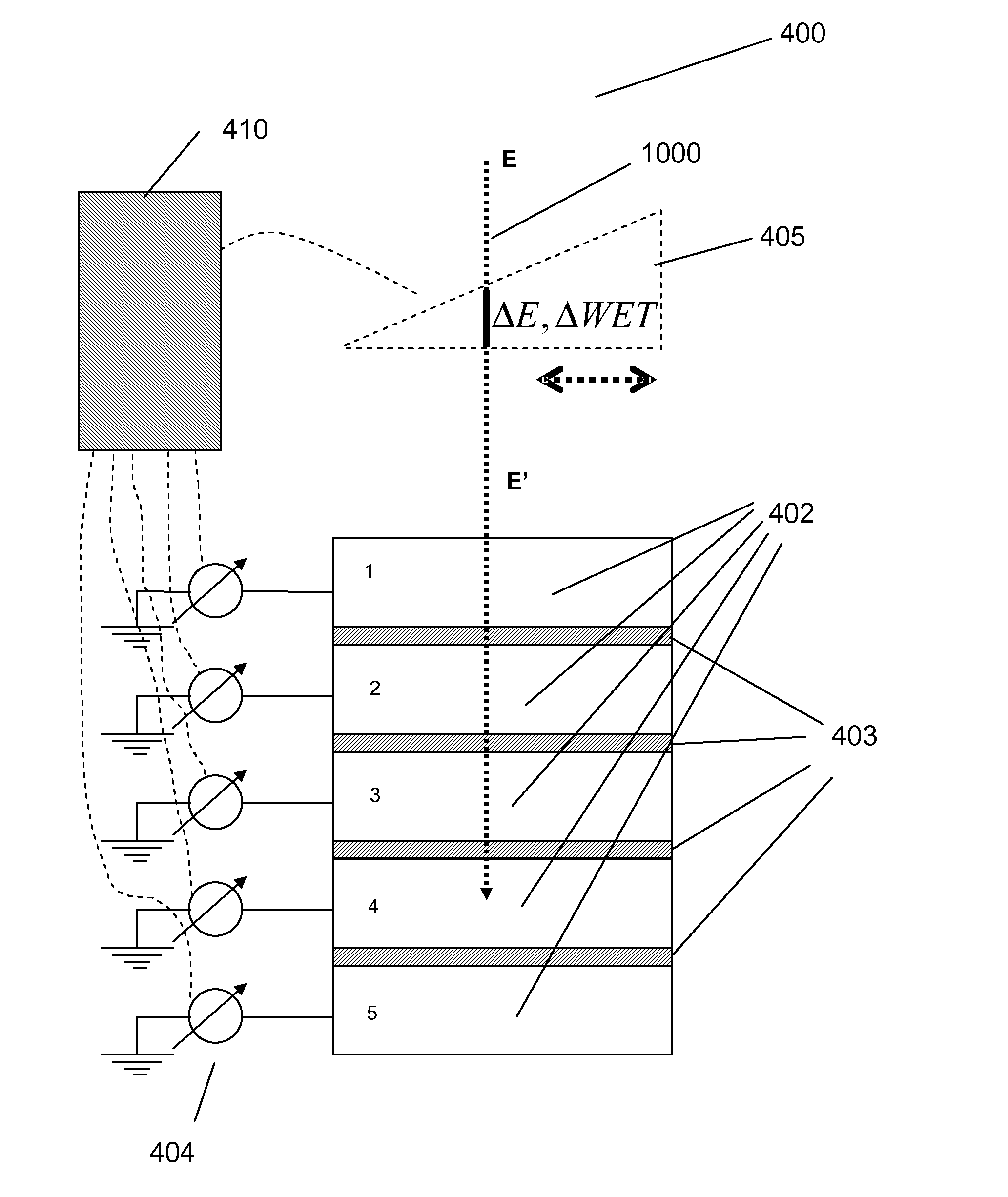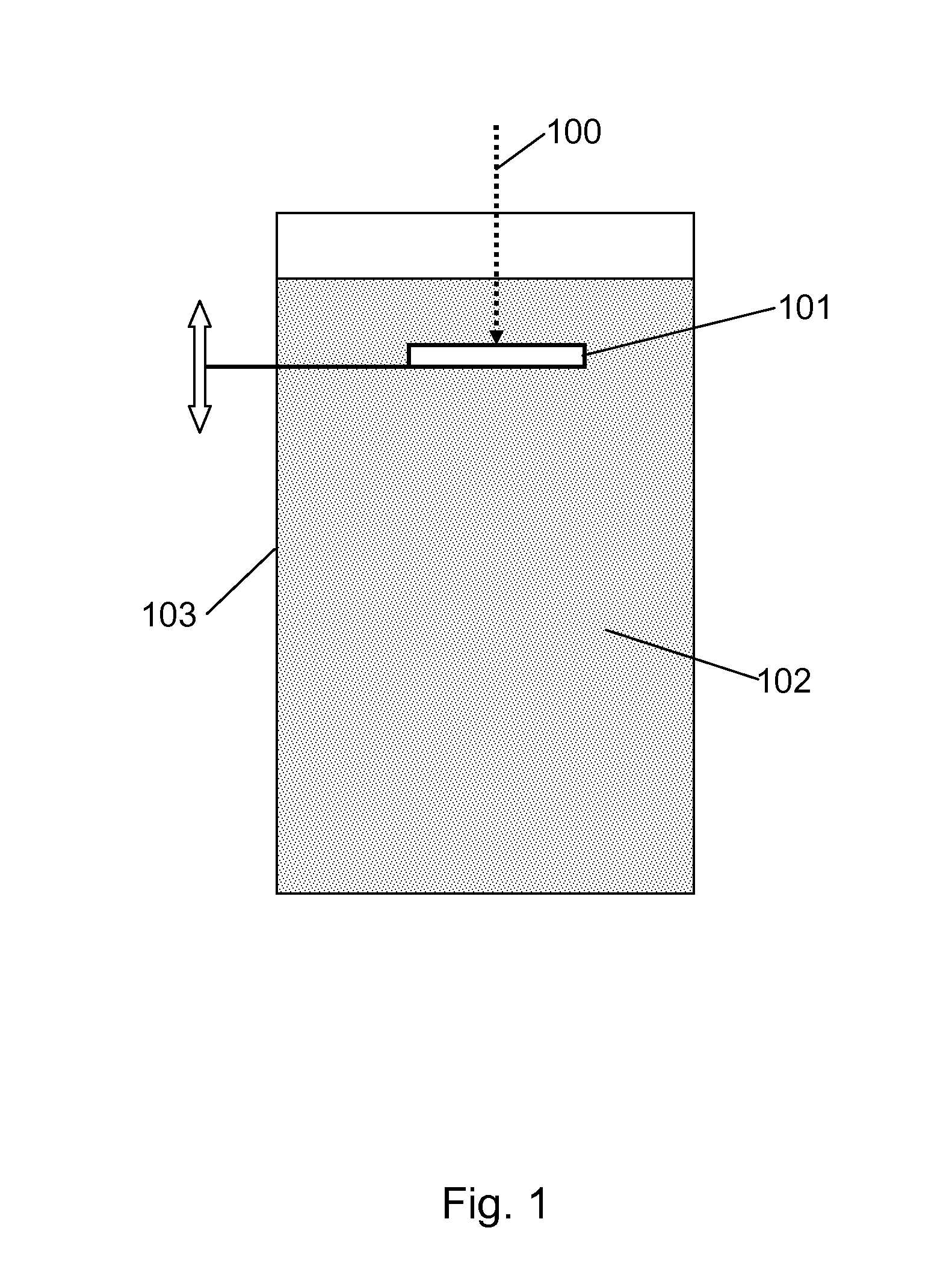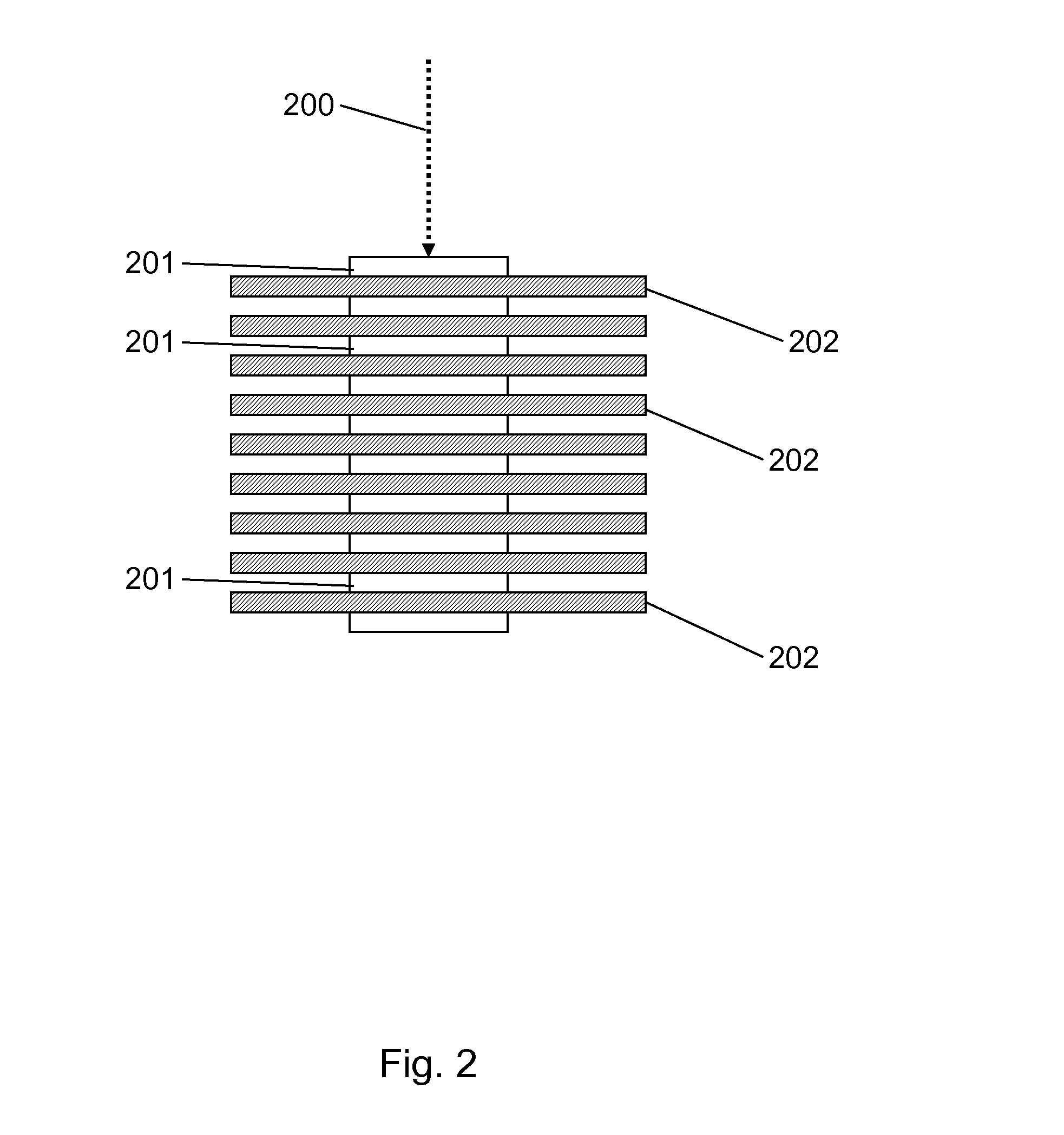Device And Method For Measuring Characteristics Of An Ion Beam
a technology of ion beam and characteristic measurement, applied in the field of hadron therapy, can solve the problems of insufficient type of detector for particular applications, inability to apply process to radiation delivery methods where collimators are used, and time-consuming procedures, etc., and achieve the effect of improving the capacity of said plurality of sensors
- Summary
- Abstract
- Description
- Claims
- Application Information
AI Technical Summary
Benefits of technology
Problems solved by technology
Method used
Image
Examples
embodiment 1
[0059]When the detector 600 is in use, the incident beam is scanned along the 300 mm over said wedge shaped element 604. While the beam is scanned over the wedge the total thickness of the detector 600 encountered by the particle beam varies accordingly. This is illustrated on FIG. 6 showing various beam crossing positions A, B, C, D, E, F, i.e. positions on the wedge where the beam is crossing the wedge. This can be a continuous position variation for crossing the wedge or a variation in small steps. As a consequence, different relative positions of the beam A,B,C,D,E,F over said wedge-shaped element 604 cause the beam to stop on different faraday cups of said stack. Since dimensions and number of faraday cups, as well as the water equivalent thickness of the materials of faraday cups and insulating plates, are known, it is possible to determine the characteristics of the particle beam by processing measurements of current coming from faraday cups by means of a processing unit. For...
second embodiment
[0060]FIG. 8 shows a detector 800 according to the invention. Said detector 800 is also embedded in a housing 801 and comprises a stack of several parallel faraday cups 802 separated from each other by PMMA insulating plates 803. Detector 800 further comprises a rotating helical wedge 804 which is capable of rotating about an axis parallel to the direction of said ion beam 1000 and which is located between the radiation source and said stack of faraday cups 802. This rotating helical wedge 804 is made up of for example polycarbonate resin thermoplastic and has a non constant thickness so that it has a given thickness for a given rotation angle θ. Other materials could be used for the rotating wedge as well (carbon, . . . ).
[0061]Helical wedge 804 has either a stepped shape, as shown in FIG. 10, or an unidirectional constant gradient with a sharp edge at the end of a turn. In this manner it is possible to modulate the range of the incoming particle beam 1000 by simply rotating said h...
embodiment 2
[0062]For a nozzle using a scattering technique and where a rotating range modulator wheel is integrated in the nozzle to modulate the incoming beam, the principles of embodiment 2 can be used to measure the beam range. The range modulator of the nozzle can in this case play the role of rotating wedge 804.
[0063]According to a variant of the invention, as shown in FIG. 9, said stack of Faraday cups 902 are further separated from each other. As shown on FIG. 9 in-between the insulating plates 903 a thin grounded plates 904 is added. The use of such thin grounded plates 904 reduces influences of adjacent faraday cups as well as electrical influences from the surroundings and allows the detector 600, 800 providing different types of measurement, as follows. Faraday cups act in fact as collecting capacitors which collect or integrate the charge deposited from the incident particle beam 1000. In order to measure this charge each faraday cup can be discharged (e.g. to an integrating circui...
PUM
 Login to View More
Login to View More Abstract
Description
Claims
Application Information
 Login to View More
Login to View More - R&D
- Intellectual Property
- Life Sciences
- Materials
- Tech Scout
- Unparalleled Data Quality
- Higher Quality Content
- 60% Fewer Hallucinations
Browse by: Latest US Patents, China's latest patents, Technical Efficacy Thesaurus, Application Domain, Technology Topic, Popular Technical Reports.
© 2025 PatSnap. All rights reserved.Legal|Privacy policy|Modern Slavery Act Transparency Statement|Sitemap|About US| Contact US: help@patsnap.com



